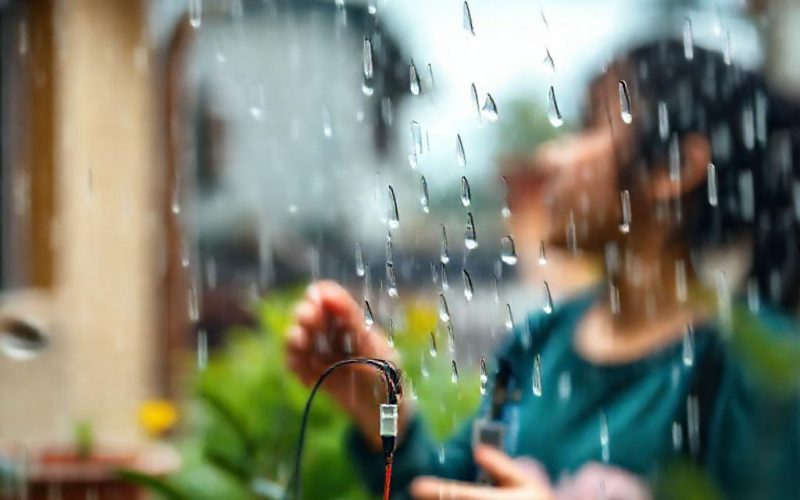In a world where smart technology is reshaping our daily lives, rain detection systems play a crucial role in various applications—from automating home appliances to safeguarding industrial equipment. Imagine a system that can automatically close your windows, turn off outdoor lights, or trigger irrigation systems the moment it starts raining. This is exactly what a Rain Detector using a Rain Sensor and Arduino UNO can achieve. In this blog post, we’ll guide you through building your own rain detection system, exploring its components, circuit connections, programming, and real-world applications.

What is a Rain Sensor?
A rain sensor is an electronic device designed to detect the presence of rain by measuring changes in resistance, capacitance, or optical properties when exposed to water. These sensors are commonly used in automotive windshield wipers, smart home systems, and weather monitoring stations. There are three main types of rain sensors:

-
- Optical Rain Sensors: Use light beams to detect water droplets, providing high accuracy but requiring more complex circuitry.
- Capacitive Rain Sensors: Measure changes in capacitance caused by water, offering good sensitivity but may be affected by humidity.
- Resistive Rain Sensors: The most common type, which uses two exposed electrodes that change resistance when wet, making them cost-effective and easy to implement.
While rain sensors offer high reliability in detecting moisture, they may struggle in extreme weather conditions or require periodic calibration.
Components Required for the Project
Hardware Components
To build this project, you’ll need the following hardware:
- Arduino UNO: The microcontroller that processes sensor data and controls outputs.
- Rain Sensor: Detects rain by measuring resistance changes (e.g., YL-83 or similar models).
- Breadboard: For prototyping and connecting components.
- Jumper Wires: To establish connections between components.
- LED (Optional): For visual rain detection feedback.
- Relay Module (Optional): To control high-power devices like motors or pumps based on rain detection.
Software Components
- Arduino IDE: The development environment for writing and uploading code to the Arduino.
- Rain Sensor Library (If Required): Some sensors may need specific libraries for better integration.
Circuit Diagram and Connections
The circuit for this project is straightforward. First, connect the rain sensor’s analog output to an analog pin on the Arduino (e.g., A0). Then, connect the sensor’s power and ground pins to the Arduino’s 5V and GND pins, respectively. If using an LED, connect it to a digital pin (e.g., D13) through a current-limiting resistor. For the relay module, connect it to another digital pin (e.g., D8) to control external devices.
Progress Overview
Progress analysis for Rain Detector Using Rain Sensor and Arduino Uno
Below is a step-by-step guide:
- Connect the rain sensor’s VCC to Arduino’s 5V pin.
- Connect the sensor’s GND to Arduino’s GND pin.
- Connect the sensor’s DO (Digital Output) to any digital pin (e.g., D7).
- Connect the sensor’s AO (Analog Output) to an analog pin (e.g., A0).
- If using an LED, connect its anode to a digital pin via a resistor and its cathode to GND.
Programming the Arduino UNO
Installing the Required Library
Most rain sensors don’t require additional libraries, but you may need to install the Arduino IDE for basic functionality. Ensure you have the latest version of the IDE installed on your computer.
Writing the Code
Here’s a sample Arduino sketch to read the rain sensor and control an LED:
cpp
const int rainSensorPin = A0; // Analog pin connected to the rain sensor
const int ledPin = 13; // Digital pin connected to the LED
const int threshold = 500; // Adjust based on sensor sensitivity

void setup() {
pinMode(ledPin, OUTPUT);
Serial.begin(9600);
}
void loop() {
int sensorValue = analogRead(rainSensorPin);
Serial.println(sensorValue);
if (sensorValue < threshold) { digitalWrite(ledPin, HIGH); // Turn on LED when rain is detected } else { digitalWrite(ledPin, LOW); // Turn off LED when no rain is detected }
delay(1000);
}
Explanation:
- The
analogRead()function reads the sensor’s output value. - A threshold value determines when rain is detected (adjust based on testing).
- The LED turns on when the sensor value falls below the threshold, indicating rain.
Working Principle and Applications
The rain detector works by measuring changes in resistance when water droplets come into contact with the sensor’s exposed electrodes. As water accumulates, resistance decreases, triggering the Arduino to activate connected devices. This system has numerous applications:
- Smart Home Automation: Automatically close windows, turn off sprinklers, or activate indoor lighting when rain is detected.
- Industrial Control Systems: Protect machinery from water damage by shutting down operations during rainfall.
- Weather Monitoring: Log rainfall data for agricultural or meteorological research.
Conclusion
Building a rain detector using a rain sensor and Arduino UNO is a practical project with endless possibilities. Whether for personal automation or industrial use, this system offers a cost-effective and efficient way to monitor rainfall. With further enhancements—such as integrating Wi-Fi modules for remote alerts or using more advanced sensors—you can expand its functionality even further.
Frequently Asked Questions (FAQs)
Q: What is the accuracy of the rain sensor?
A: The accuracy depends on the sensor type and environment. Resistive sensors offer basic accuracy, while optical sensors are more precise.
Q: Can I use this project for outdoor applications?
A: Yes, but ensure proper waterproofing for the Arduino and sensor to prevent damage.
Q: How can I calibrate the rain sensor?
A: Test the sensor under different conditions and adjust the threshold value in the code accordingly.
Q: Can I use this project with other microcontrollers?
A: Yes, but modify the code and wiring to match the microcontroller’s specifications.




